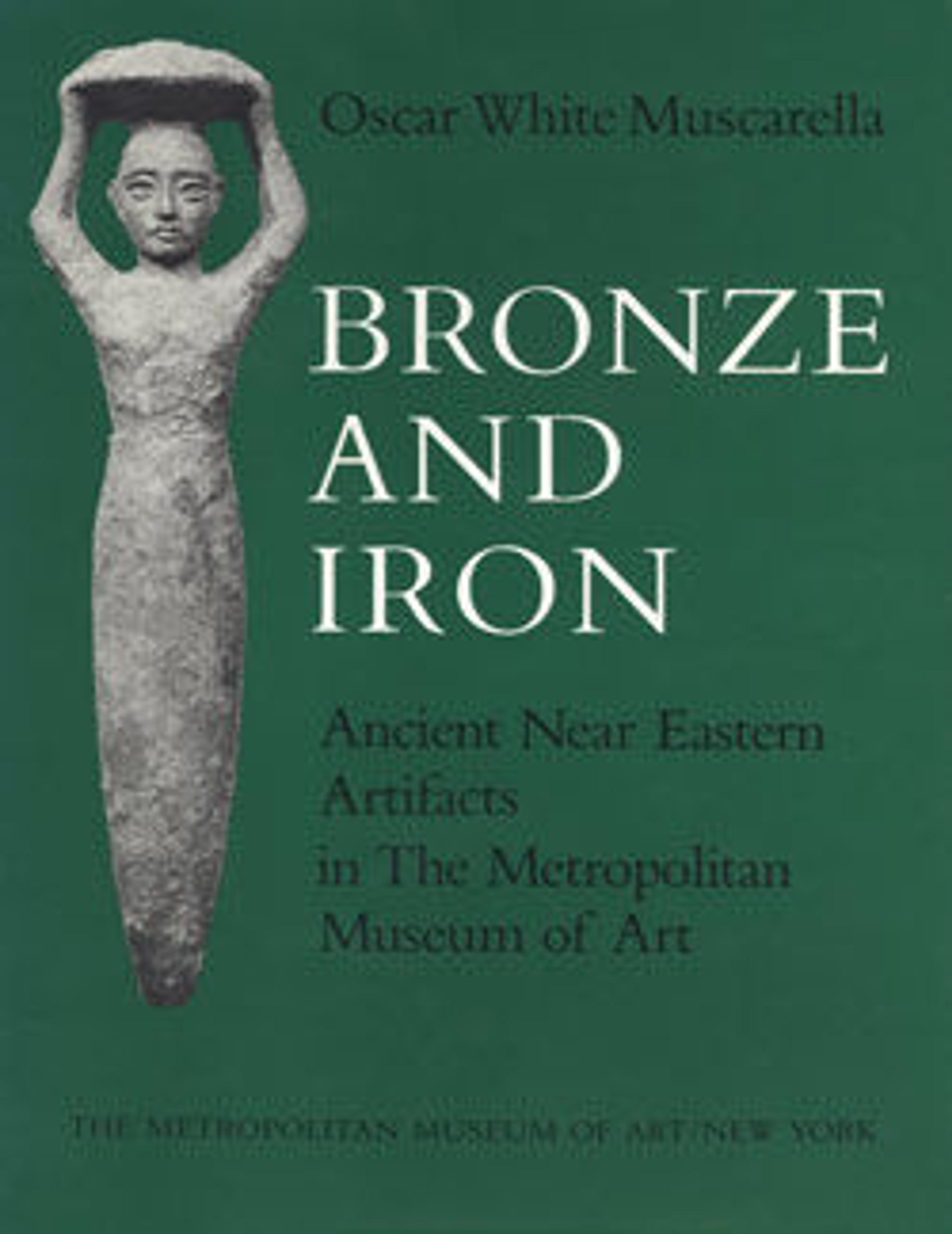Pendant with a kneeling male
This thin bronze sheet features a male figure in repousse facing forward. He has bulging eyes, pointed ears and a beard. No other details of his body are shown. One attenuated leg with bent knee is depicted; it is unclear whether the figure is meant to be seated or kneeling, since the bottom of the sheet is missing. The figure holds palm fronds in each hand. There are rosettes (or some other floral element) in the background. There is a rolled loop at the top of the sheet, indicating that it is a pendant.
This pendant was excavated at Surkh Dum, a settlement site in Luristan in the Zagros Mountains of western Iran. It was found in a structure interpreted as a sanctuary and was thus probably an offering to a god. The figure on the pendant has been interpreted as a fertility god.
This pendant was excavated at Surkh Dum, a settlement site in Luristan in the Zagros Mountains of western Iran. It was found in a structure interpreted as a sanctuary and was thus probably an offering to a god. The figure on the pendant has been interpreted as a fertility god.
Artwork Details
- Title: Pendant with a kneeling male
- Period: Iron Age III
- Date: ca. 8th–7th century BCE
- Geography: Iran, Luristan, Surkh Dum
- Culture: Iran
- Medium: Bronze
- Dimensions: 3 1/16 × 3 7/16 × 1/4 in. (7.8 × 8.75 × 0.7 cm)
- Credit Line: Rogers Fund, 1943
- Object Number: 43.102.5
- Curatorial Department: Ancient West Asian Art
More Artwork
Research Resources
The Met provides unparalleled resources for research and welcomes an international community of students and scholars. The Met's Open Access API is where creators and researchers can connect to the The Met collection. Open Access data and public domain images are available for unrestricted commercial and noncommercial use without permission or fee.
To request images under copyright and other restrictions, please use this Image Request form.
Feedback
We continue to research and examine historical and cultural context for objects in The Met collection. If you have comments or questions about this object record, please complete and submit this form. The Museum looks forward to receiving your comments.
